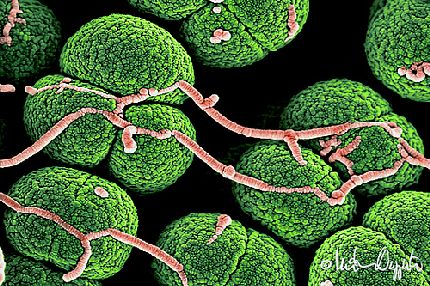
New York (GenomeWeb News) - Two new studies in genome research reveal genome diversity - especially structural polymorphism and number of copies - that exists in the Leishmania species parasites transmitted by mosquitoes that cause leishmaniasis carnivorous state. The severity and nature of infection, leishmaniasis can vary greatly, ranging from skin lesions to disfiguring diseases, and sometimes fatal internal infections. The form that the disease depends, in particular, that of 21
Leishmania parasite species involved. For instance, leishmaniasis is caused by
Leishmania major parasites usually affect the skin, L. donovani
species were involved in severe forms of leishmaniasis, visceral leishmaniasis known as, which attacks the internal organs. "There are many kinds of parasites that can cause various forms of the disease and require different forms of treatment", University of Glasgow researcher Jeremy Mottram, said in a statement. "It can also cause problems for diagnosis."
Look at it further, Mottram and his colleagues from several centers in the UK and other countries genome sequence >> << L. donovani
isolated from patients in Nepal. Next >> << characterize a ten second consecutive L. donovani
isolates with variable drug responses, which were collected in patients with visceral leishmaniasis in Nepal and India. Although they found some nucleotide changes, changes in copy number and structural differences between strains were much more pronounced. These changes affect not only the genes and chromosomes and, in some cases leads to the production of parts circularized DNA or episomy that were independent of the total >> << chromosomes Leishmania. "Against the backdrop of relative genetic homogeneity, we found large changes in chromosome number of copies between the two lines," the researchers wrote. "Other forms of structural changes were significantly associated with drug resistance, in particular, including the dose and the number of gene copies experimentally tested circular episomy present in all lines and is described here for the first time."
For reference genome sequencing phase of the study, researchers used Roche 454 GS FLX Titanium and Illumina Genome Analyzer platform for Nepalese L. donovani sequences isolated. They re-sequence of 16 isolates from the region of Tera Nepal and Bihar State in India, showed a number of strattera price treatment response and compared them with >> << L. donavani
reference genome. Analysis of 17 L. donovani
genome revealed more than 3500 TNA, as well as transport and drug resistance-related genes that appear to have been the subject of positive selection in the genome. But much of the genetic variability, the researchers found in the genomes involved structural changes and changes in gene and chromosome copy number. "We have shown that the evolution of these organisms is driven not only by one letter changes in their genetic codes, and more mutations in the copy number of genes and whole chromosomes," Wellcome Trust Sanger Institute researcher Matthew Berriman, one of the respective author
L. donovani
research sequence, said in a statement. Indeed, in the accompanying study, Berriman and some members of the same team found similar variations in the number of copies when they
for four other species of Leishmania. For this analysis, the researchers used Sanger and Illumina sequence to a reference genome
L. Mexicana, Leishmania species associated with skin infections from Guatemalan
LA Mexicana
isolate. In the same study, but also improve existing genome sequences for three other species -
L. major and L. infantum
L. braziliensis
comparison to copy number and other models of genome species and strains associated with different forms of leishmaniasis. Overall, the results showed that the change in the number of copies is more common in the
- Leishmania than SNP variation or gene content. For example, scientists have found about 8000 genes predicted in each genome, but only two genes that are specific for
LA Mexicana. In contrast, however, their comparison revealed numerous changes in the number of copies in the genome and the gene level and chromosomes. "We found that different species of Leishmania parasites share many similar genes," Mottram said, "but the genomes are structured differently and with a large change in the number of chromosomes."
Based on its findings until now, scientists suspect that the various features
Leishmania parasites and infections that they cause may be due to variability of the number of copies. "This is largely different structure of the genome, including the number of copies of genes and, consequently, the number of proteins expressed by these genes that cause differences between species and, consequently, clinical form of disease", University of Glasgow parasitology researcher Nicholas Dickens, who was co-first author of the study the number of copies, said in a statement. .





